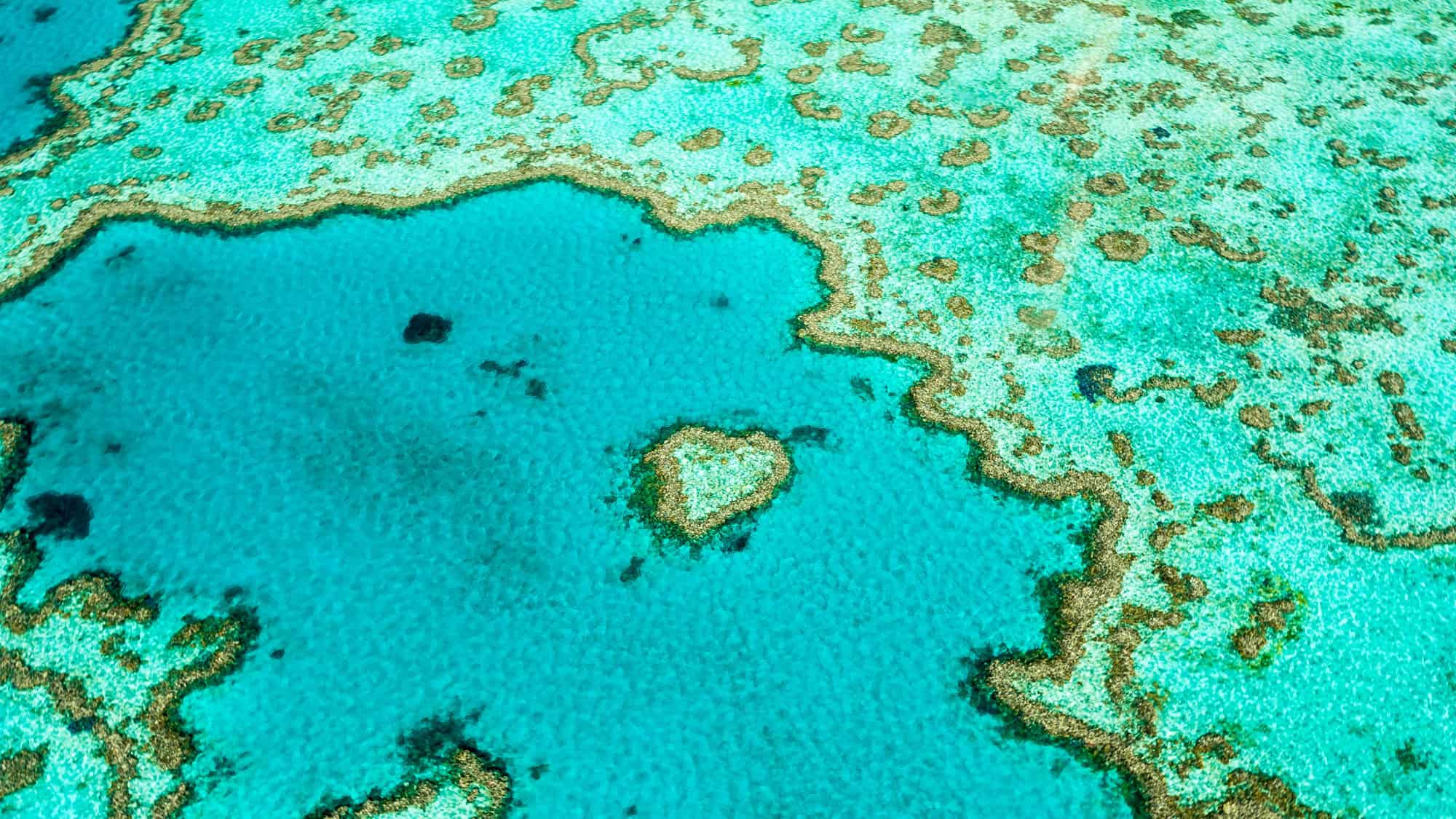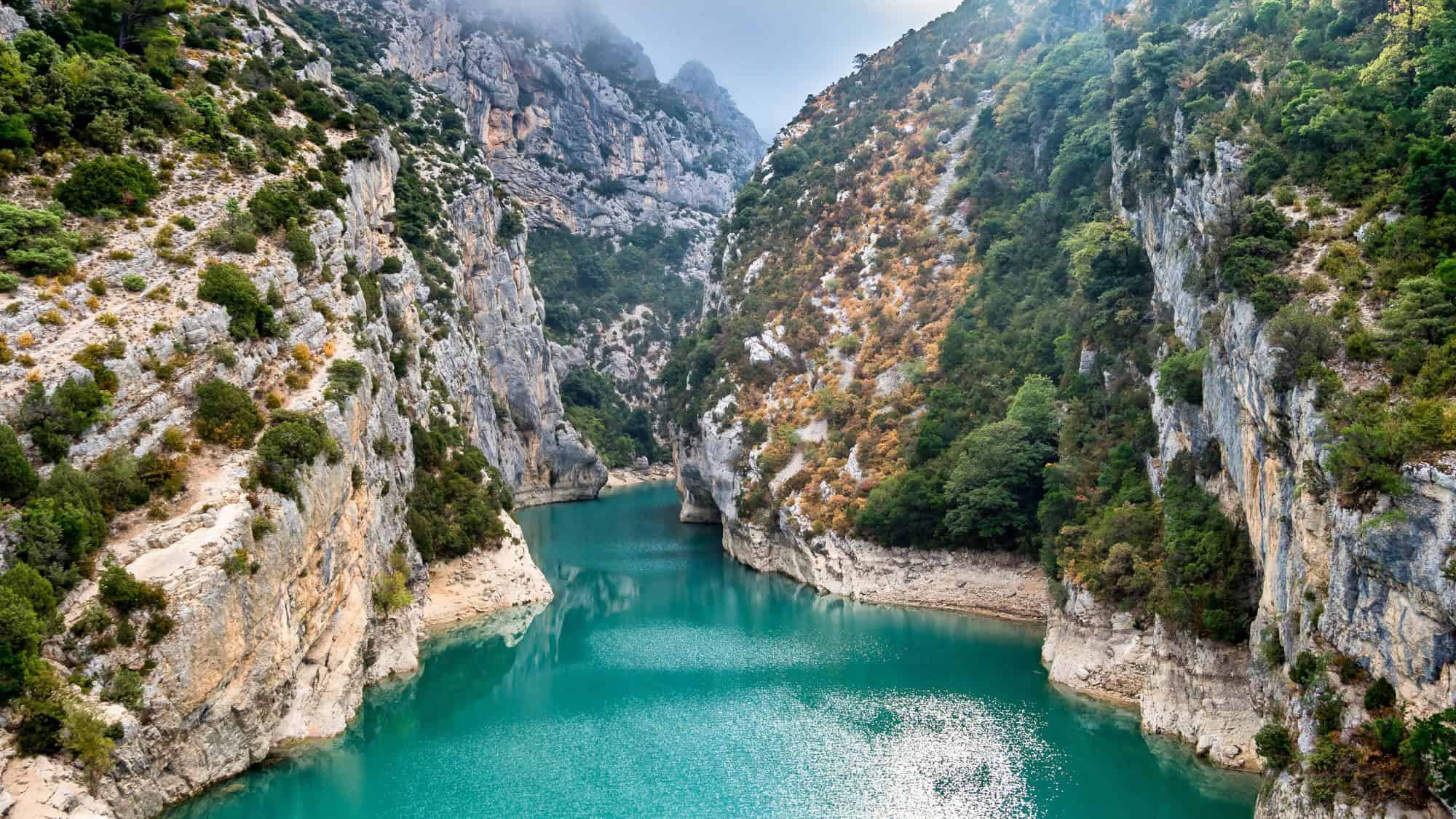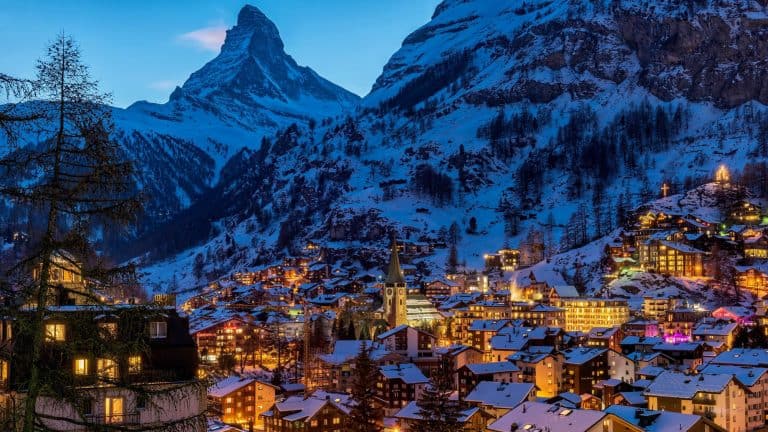Discover Parks & Wildlife contains affiliate links and is a member of the Amazon Services LLC Associates Program. If you make a purchase using one of the Amazon links, we may receive compensation at no extra cost to you. We may also use select AI tools to support our creative process, but all content is reviewed, refined, and finalized by our human team. See our disclosure policy and our AI use policy for more information.
12 Desert Landscapes That Are Surprisingly Full Of Life
Dry horizons can trick you. You scan a pale ridge, a salt flat, a dune line that seems as still as a painting, and assume nothing moves. Then a shadow slips across a wash. A tiny flower holds dew from a night breeze. A lizard leaves commas in the sand.
Deserts are not empty. They are careful, and they make you pay attention. Give them time, and they trade silence for a steady pulse. Wind carries seeds to sheltered hollows. Rare storms wake buried bulbs. Nocturnal hunters own the dark hours, then vanish at dawn.
You come for the scenery. You stay because every mile reveals a new strategy for staying alive. The secret is in the details, and in the scale. A canyon bend hides a spring no wider than a bathtub. A fog bank feeds a hillside that has not seen rain in months. Animals avoid heat by shifting their schedules.
People who live here do the same, moving early, resting midday, and working again when the sun drops. If you plan your time with the same respect, you see what many miss who venture out mid-day. Life is present, steady, and busy, only at a slightly different tempo.
Sonoran Desert – Arizona And Northern Mexico

You expect cactus and heat, and you get both, yet the Sonoran shows abundance at every turn. Two rainy periods most years feed a patchwork of habitats, from low valleys to rocky hills. Saguaro forests rise over dry washes, many taller than a two-story house, and serve as apartments for woodpeckers, elf owls, and bats.
Brittlebrush and ocotillo leaf out after short showers. In spring, carpets of poppies and lupine can paint hillsides when conditions line up, turning quiet slopes into a gallery of color. And at dusk, mule deer drift toward water, while coyotes test the edges of campgrounds.
Plan sunrise or sunset walks to avoid the hottest hours. Bring at least a gallon of water per person for a full day, a wide-brimmed hat, and sturdy shoes for rocky trails. Saguaro National Park near Tucson gives easy access to classic scenery with paved loops and short paths. Organ Pipe Cactus National Monument shows a wilder side close to the border.
Mojave Desert – California And Nevada

The Mojave looks spare at noon, then fills with motion when the sun drops. Joshua trees twist over volcanic basins. Creosote forms low rings that can live for centuries. In spring, desert gold and sand verbena spread across gravel fans after wet winters, a phenomenon that locals chase along famous byways.
Bighorn sheep work high ridges near seeps. Desert tortoises stay hidden for long spells, then graze during cooler seasons. Some canyons shield pockets of oak and juniper that feel miles from open flats, a reminder that elevation changes life as much as rainfall does.
Base yourself near Death Valley, Mojave National Preserve, or Joshua Tree National Park. Each area offers a different mix of valleys, dunes, and granite gardens. Start early and save long hikes for shoulder seasons when daytime highs sit in a more manageable range. Don’t forget to carry paper maps, since cell service fades fast once you leave towns.
Chihuahuan Desert – Texas, New Mexico, And Northern Mexico

Stretching from West Texas into New Mexico and deep into northern Mexico, the Chihuahuan is a high desert with surprising lushness after summer rains. Agaves and yuccas stud limestone hills. Sotol fields sway in hot gusts. Ocotillo bursts with red in late spring.
Roadrunners sprint across park roads, then vanish into mesquite. In riparian corridors, cottonwoods shade pools that hold minnows and dragonflies. The mix is strongest where mountains lift the terrain, trapping pockets of moisture and creating cooler microclimates that stack life at different heights.
Big Bend National Park is the perfect classroom. The Rio Grande supports beaver sign and herons in a canyon that runs below sun-baked mesa tops. Short trails lead to natural springs where nectar-feeding bats visit agave blooms at night. And summer storms can bring sudden flows through dry washes, so give arroyos wide respect when thunderheads build.
Atacama Desert – Northern Chile

The Atacama’s reputation for dryness is earned, yet life forms a careful web around fog-fed hills, salt flats, and high lakes. Along the Pacific slope, cold offshore currents create morning mist that drifts inland. Beetles, small shrubs, and even hardy lichens use that brief moisture to stay active.
Farther inland, salar basins concentrate minerals and attract flamingos that sift for tiny crustaceans. After rare rainfall events, dormant seeds respond with a bloom that can spread for miles, a short season of color that proves this landscape is patient, not barren.
Start in San Pedro de Atacama for access to Valle de la Luna, high geyser fields, and shimmering salt pans. But altitude is a factor, so ease into higher zones with short outings. Carry layers, since strong sun can turn to cool winds by late afternoon. A lightweight scarf helps with dust during gusty hours. Tour operators reach remote lagoons on safe routes, which is an easy and smart choice for first-time visitors.
Kalahari Desert – Botswana, Namibia, And South Africa

More semi-arid than classic sand, the Kalahari trades endless dunes for a broad realm of grass, thorn trees, and seasonal pans. After rains, wildflowers appear in open flats, and antelope herds spread into new grazing. Meerkats stand watch near burrows that lace sandy soil.
Lions patrol along old riverbeds, using sparse cover with surprising skill. Raptors circle over rolling plains, then drop to snatch lizards or rodents. And human communities have long read the weather patterns, moving with seasonal water and teaching efficient ways to travel and hunt with minimal waste.
The Central Kalahari Game Reserve holds a vast area with long distances between camps. A four wheel drive vehicle with two spares, a compressor, and extra fuel is a smart setup. Winter brings cold nights, so add a warm layer to the top of your bag. Summer storms turn pans muddy, which attracts wildlife and raises driving challenges.
Plan morning and late-day game drives, then rest during bright hours. Watch for bat-eared foxes near sunset and listen for jackals at night.
Namib Desert – Namibia

The Namib meets the Atlantic with bone-dry dunes and regular fog, an odd partnership that feeds a surprising cast of specialists. At dawn, fog rolls inland. Beetles collect droplets on their shells. Lichens green up on shaded rocks. The welwitschia plant, a tough survivor with only two leaves that grow through its life, taps mist and deep moisture to endure.
Deeper in the desert, dunes rise to heights that command wide views. Springbok and oryx roam sparsely vegetated plains. Near ephemeral rivers, camel thorn trees stretch long roots to find hidden water that lingers after distant storms.
Sossusvlei offers accessible dune fields, with climbs that reward you with views across a sea of sand. Start before sunrise to reach crests in cooler air, then descend before the heat climbs. Skeleton Coast drives reveal fog banks and ship remains, but also jackals trotting on the firm beach. Just make sure to watch for sidewinder snake peppering dune slopes.
Sahara Desert – Morocco And Beyond

The Sahara spans a vast region, yet life concentrates in clever places, and oases prove it. In Morocco, palm groves line river corridors such as the Draa and the Ziz. Shallow water tables and springs allow dates, citrus, and grains to grow within a short walk of the open desert.
Birds move through these green islands during migration. Reptiles find refuge in stone fences and mud walls. And dunes nearby hold beetles and small mammals that work the night shift, then burrow before sunrise. After winter storms, hardy annuals sprout in gravel flats and create small, bright patches.
You can start your trip from towns that sit on the edge of dune fields, such as Merzouga near Erg Chebbi. Short camel rides reach camp clusters before sunset, which lets you explore with lower heat. Carry cash for local guides and crafts. And respect water use inside the oasis, since every drop matters.
Arabian Desert – Saudi Arabia & Middle East Countries

The Empty Quarter sounds lifeless, yet the Arabian Desert holds more variety than its name suggests. Star dunes line horizons for miles. In lower basins, salt flats create stark patterns and reflect the sky. But after rare winter rains, ephemeral grasses push through sand and lure oryx and gazelles into open ground.
Foxes and hares leave delicate trails near camps each night. Migratory birds ride seasonal winds and dot small wetlands that form where groundwater reaches the surface along the desert’s edges. And modern roads make access easier from cities in the Gulf.
But high heat still rules daily plans. Start early, break midday, and return to activity as the sun drops. A guided 4×4 trip is wise for first-time visitors, since dunes shift and navigation can be misleading. In cooler months, camps set up low tables for meals under clear skies that stretch bright and long.
Thar Desert – India And Pakistan

The Thar is a human landscape as much as a natural one. Villages stud sandy plains, and fields reach the edges of shifting dunes. Yet wildlife still thrives in protected tracts and less-traveled corners.
Chinkara and blackbuck graze in early light. Desert fox and caracal work at night. In winter, migratory cranes gather near seasonal lakes, their calls rolling across flat land. Scrub holds small quail and larks. And prosopis and acacia provide shade and fuel, shaping daily routines that fit tight water budgets and strong sun.
Base in Jaisalmer for guided trips into dune fields and visits to historic forts built of golden stone. Camel treks reach camps within a few miles of town, which makes short visits easy. Carry a scarf for dust and drink tea in the shade during the harshest hours.
Make sure to respect local customs and ask before photographing people.
Gobi Desert – Mongolia And China

Cold nights and big sky define the Gobi, a land where steppe meets desert and where life threads through flatter basins and rocky outcrops. Grasses hold soil across wide plains. Saxaul shrubs anchor dunes and provide shelter from cutting winds.
Wild camels move long distances to reach scattered water sources. Jerboas bounce through twilight. Near mountain fronts, argali and ibex navigate cliffs while raptors ride thermals. And nomadic herders read the land with skill that shows in the health of their animals and in the clean lines of their camps.
Travel here is about distance and time. Dirt tracks run for many miles between towns. Summer days can be hot, then drop fast after sunset. Spring brings wind that can lift dust into the air for hours. But local guesthouses offer warm meals and simple rooms that provide a window into daily life.
Patagonian Desert – Argentina

Patagonia’s desert is a wind-ruled plateau that runs for hundreds of miles. It is not a place of tall dunes. It is a realm of gravel plains, low shrubs, and distant horizons that bend into a silver line at midday.
Guanacos browse in small groups and move with purpose across low ridges. Lesser rheas trot through open country and vanish behind hummocks that seem too small to hide them. Foxes and pumas use dry draws as travel lanes. Along river canyons, poplars and willows mark green corridors that slice through the open space.
The wind is the main element to plan for. It can push hard for hours, so bring snug layers and protective glasses. Spring and fall bring milder temperatures for hiking to overlooks and for bike rides on quiet roads. Keep distance from wildlife and move slowly when taking photos to avoid pushing animals into energy-draining runs. On clear nights, the southern starry sky fills the scene.
Negev Desert – Israel

The Negev is a compact desert with a wide range of forms, from chalk cliffs to makhtesh craters that look like giant bowls carved into the earth. In winter and early spring, brief rain wakes low blooms that spread across loess hills.
Ibex pick safe lines across rock ledges near springs. Nubian nightjars haunt wadis with scattered shrubs. Along dry riverbeds, acacias grow deep roots to find water that moves underground. Small farms and research stations test ways to grow with limited water and heavy sun, a model for arid living.
Interested in a visit? Start in Mitzpe Ramon to explore Makhtesh Ramon, where trails reach overlooks with broad views. Hike early, then rest in shaded visitor centers during midday. Watch for hyrax near rocks, and for griffon vultures riding thermals above cliffs. In moonlight, the crater rim turns silver and quiet.
Like Our Content? Follow Us on MSN (or click the Follow Button above) for more from Discover Parks & Wildlife.
12 Natural Wonders You Have To See To Believe

Get ready to have your mind spectacularly blown as you embark on a whirlwind tour of natural wonders so jaw-dropping that they’ll make your social feed look like it’s been all dressed up with nowhere to go.
15 Spectacular Canyons Around The Globe You’ll Want to Explore ASAP

Eager to expand your horizons? Check out these jaw-dropping places that’ll have you canyon-hopping across the globe.
11 Breathtaking Mountain Lakes That Demand Your Attention Now

Prepare to have your jaw hit the floor. These mountain lakes redefine the meaning of “scenic.”






